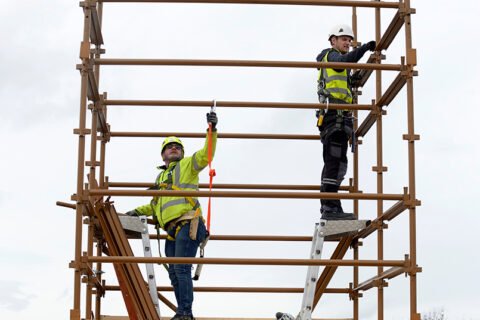Introduction
3D printing has become a game-changer in manufacturing, design, and even art. Whether you’re a hobbyist or a professional, achieving flawless 3D prints isn’t just about having a great printer—it’s about having the right tools to streamline the process. The 3D659.com Blog is a fantastic resource for understanding the best tools available, offering insights that help you avoid common printing pitfalls and create precise, high-quality prints. Here’s a breakdown of ten essential tools highlighted on 3D659.com Blog that can take your 3D printing game from good to great.
Why 3D659.com Blog is Your Go-To for 3D Printing Tips
When it comes to 3D printing, it’s easy to feel overwhelmed. There are countless gadgets, software programs, and techniques that promise perfection, but not all deliver. 3D659.com Blog stands out because it breaks down complex information into practical, easy-to-understand tips for people at every skill level. From beginners looking to get started to experts wanting to refine their prints, the blog is packed with advice that’s approachable, actionable, and always relevant to the latest tech. Now, let’s dive into these ten must-know tools that can make all the difference!
1. Digital Calipers for Precise Measurements
Accuracy is the name of the game in 3D printing, and that’s where digital calipers shine. A slight miscalculation can throw off an entire project, but with calipers, you’re guaranteed precision down to the millimeter.
- Why It’s Essential: Calipers measure thickness, depth, and inner diameters, ensuring each component fits perfectly.
- Pro Tip from 3D659.com Blog: Measure twice, print once. This simple step can save time and materials in the long run.
Imagine printing a model with complex interlocking parts. Without calipers, you could find yourself with pieces that are too loose or don’t fit at all.
2. A Quality Spatula for Safe Print Removal
Removing a finished print from the bed can feel a bit like trying to separate a sticker without tearing it. The 3D659.com Blog recommends investing in a quality spatula or scraper designed specifically for 3D printing to make this task easy and safe.
- Why It Matters: A proper spatula reduces the risk of damaging your print or the print bed.
- Pro Insight: Always approach the edges first and work your way under the print to prevent warping or cracking.
With the right tool, you can remove your prints cleanly and confidently, ready for any additional finishing steps.
3. Build Plate Adhesive for Stronger Bed Adhesion
Bed adhesion is crucial in 3D printing to prevent prints from moving during the process. If your prints often shift or lift off the bed, build plate adhesives like glue sticks, hairspray, or specialized adhesives can work wonders.
- Why It’s Useful: Adhesives ensure your model sticks to the plate, resulting in smoother, error-free prints.
- Fun Tip: Experiment with different types of adhesives to see which works best with your printer and filament type. The 3D659.com Blog has detailed reviews to guide you!
Good adhesion prevents the heartbreak of watching your print peel up halfway through, saving you time and frustration.
4. A Reliable Filament Dryer to Reduce Moisture
Moisture is one of those sneaky enemies of 3D printing, causing issues like stringing, bubbling, and uneven surfaces. A filament dryer keeps your material dry, ensuring consistent quality throughout the print.
- Why It’s Important: Dry filament reduces print imperfections, resulting in smooth, professional finishes.
- Tip from 3D659.com Blog: Store filament in sealed bags with silica packets when not in use to keep moisture at bay.
A filament dryer can be a true game-changer, especially if you live in a humid climate where filament easily absorbs moisture.
5. Nozzle Cleaning Kit for Flawless Flow
The nozzle is the heart of your 3D printer, and if it gets clogged, your print will suffer. Regular maintenance with a nozzle cleaning kit keeps things flowing smoothly, ensuring your prints maintain quality over time.
- Why It’s Essential: Cleaning the nozzle regularly prevents clogging, reduces print failures, and extends your printer’s life.
- Pro Tip: Clean the nozzle before each large project. A few minutes of maintenance can save hours of reprinting.
With a simple cleaning routine, you can avoid one of the most frustrating problems in 3D printing: inconsistent extrusion.
6. Bed Leveling Tool for Perfect Calibration
A level bed is critical for a successful print. Even a small tilt can lead to uneven layers or failed prints. 3D659.com Blog advises using a bed leveling tool to ensure your print bed is perfectly aligned with the nozzle.
- Why It’s Worth It: Consistent calibration results in better print adhesion, fewer failed prints, and overall smoother surfaces.
- Quick Tip: Check the bed level before each print, especially if you’ve recently removed or adjusted the print bed.
Once you’re in the habit of leveling your bed regularly, you’ll notice a big improvement in your print quality.
7. Sandpaper Set for Professional Finishes
After printing, sanding can give your models a polished, professional look. The 3D659.com Blog suggests having a set of fine-grit sandpapers on hand to smooth out any rough edges or imperfections.
- Why You’ll Love It: Sanding enhances the appearance of your print, making it look high-quality and ready for display.
- Pro Tip: Use wet sanding for a cleaner finish on PLA or ABS prints.
With a little elbow grease and some sandpaper, you can elevate a good print into a great one.
8. A Heat Gun for Perfecting Post-Print Details
Heat guns can be incredibly useful for fine-tuning and smoothing out details on finished prints. They’re especially handy if you’re working with filaments that can withstand a little extra heat, such as ABS or PETG.
- Why It’s Effective: A heat gun can smooth out small imperfections, clean up stringing, and provide an overall polished look.
- Safety Note: Handle with care; too much heat can warp your print. Practice on test pieces first!
A quick pass with a heat gun can make a surprising difference, giving your prints that “factory finish.”
9. A Decent Set of Precision Tweezers
Tweezers may seem like a small tool, but they can make a big difference. From removing excess filament to adjusting intricate parts, precision tweezers allow for detailed work without damaging the print.
- Why They’re Handy: Tweezers give you control over delicate adjustments, allowing you to perfect your model down to the smallest details.
- Tip: Look for anti-static, angled tweezers to make tricky spots easier to reach.
With these, you can handle the finer details without leaving fingerprints or smudges on your work.
10. CAD Software for Pre-Print Design Perfection
The 3D printing process starts long before you hit “print.” CAD software enables you to design and customize models down to the finest detail. While there are many options available, the 3D659.com Blog offers recommendations for both free and premium programs that cater to all skill levels.
- Why You Need It: Designing your own models gives you the freedom to create unique projects and perfect every aspect of your print.
- Fun Fact: Mastering CAD software opens up limitless possibilities for personalization and creativity in your 3D printing projects.
With CAD software in your toolkit, you can turn your ideas into precise, printable designs and truly make your mark.
Conclusion: Equip Yourself for 3D Printing Success with 3D659.com Blog
Mastering 3D printing isn’t just about owning a printer—it’s about knowing how to use the right tools at each stage. The 3D659.com Blog offers a wealth of insights into choosing tools that simplify, enhance, and refine your 3D printing process. From calipers for precision to filament dryers for quality, each of these tools brings something unique to the table. Whether you’re just starting or are a seasoned printing pro, these tools can help you take your work to new levels. Ready to elevate your 3D printing? Explore more on 3D659.com Blog and start making your projects truly shine.
FAQs
What’s the most essential tool for a beginner in 3D printing?
For beginners, digital calipers are incredibly useful. They ensure precise measurements, which is critical to successful prints, especially for models with interlocking parts.
How often should I level my 3D printer bed?
It’s best to check the bed level before each print, especially if you’ve moved or adjusted the bed recently. Consistent leveling improves print adhesion and quality.
Can I use a regular heat gun for 3D printing projects?
Yes, but be cautious. A regular heat gun works well, but always test on scrap pieces to avoid overheating and warping your print.
What type of CAD software does 3D659.com Blog recommend for beginners?
3D659.com Blog often recommends Tinkercad for beginners due to its user-friendly interface. For more advanced users, Fusion 360 offers deeper customization options.
How can I prevent filament from absorbing moisture?
Using a filament dryer and storing filament in airtight bags with silica packets are effective ways to keep filament dry and prevent print defects.






